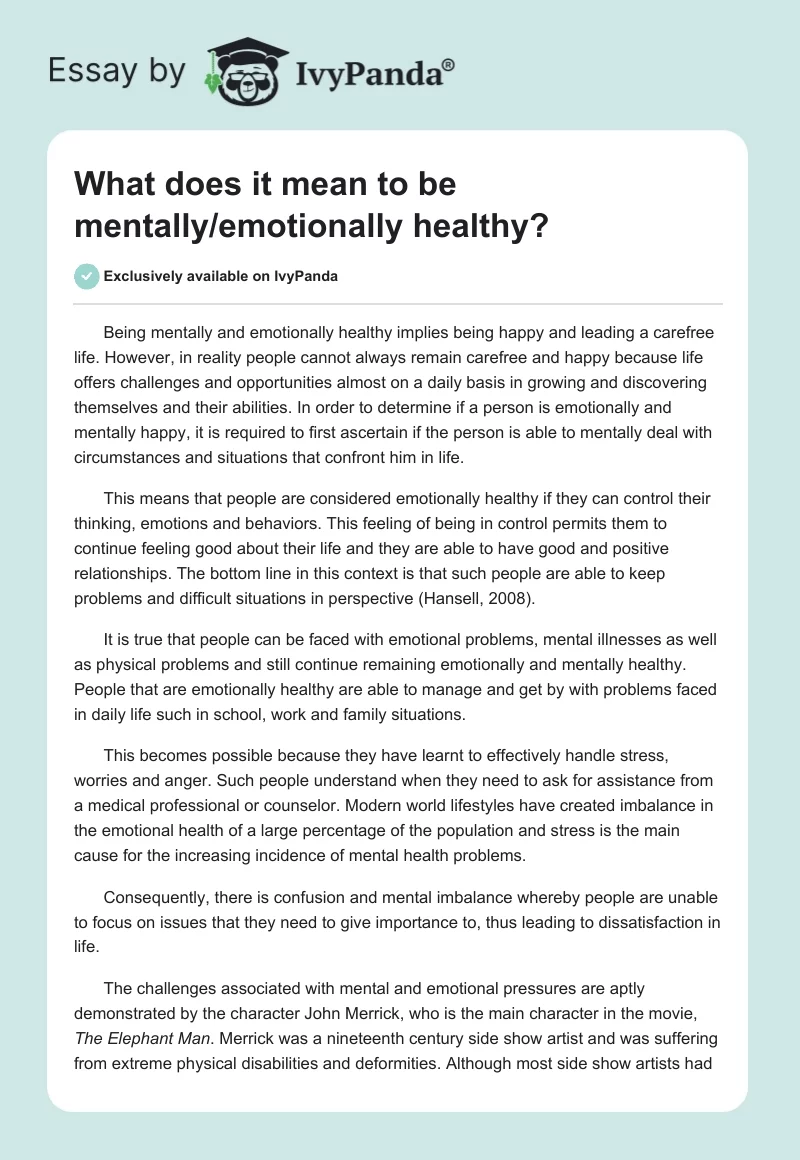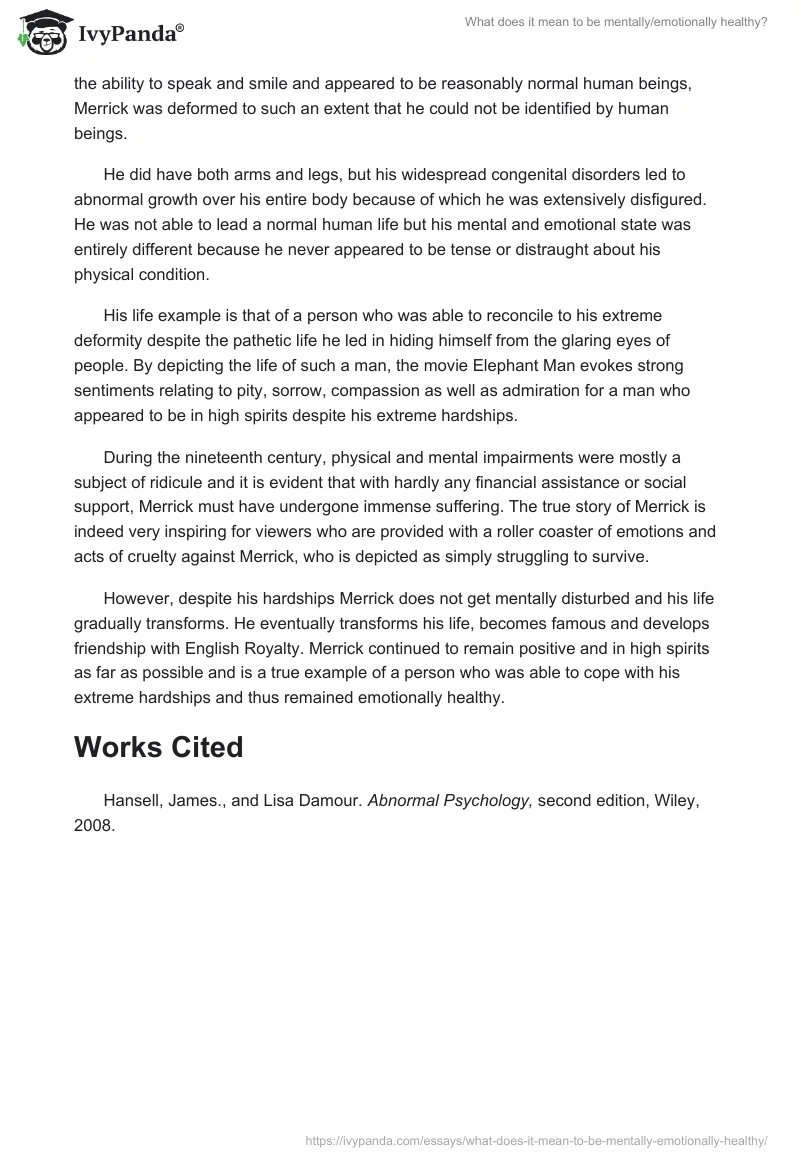Being mentally and emotionally healthy implies being happy and leading a carefree life. However, in reality people cannot always remain carefree and happy because life offers challenges and opportunities almost on a daily basis in growing and discovering themselves and their abilities. In order to determine if a person is emotionally and mentally happy, it is required to first ascertain if the person is able to mentally deal with circumstances and situations that confront him in life.
This means that people are considered emotionally healthy if they can control their thinking, emotions and behaviors. This feeling of being in control permits them to continue feeling good about their life and they are able to have good and positive relationships. The bottom line in this context is that such people are able to keep problems and difficult situations in perspective (Hansell, 2008).
It is true that people can be faced with emotional problems, mental illnesses as well as physical problems and still continue remaining emotionally and mentally healthy. People that are emotionally healthy are able to manage and get by with problems faced in daily life such in school, work and family situations.
This becomes possible because they have learnt to effectively handle stress, worries and anger. Such people understand when they need to ask for assistance from a medical professional or counselor. Modern world lifestyles have created imbalance in the emotional health of a large percentage of the population and stress is the main cause for the increasing incidence of mental health problems.
Consequently, there is confusion and mental imbalance whereby people are unable to focus on issues that they need to give importance to, thus leading to dissatisfaction in life.
The challenges associated with mental and emotional pressures are aptly demonstrated by the character John Merrick, who is the main character in the movie, The Elephant Man. Merrick was a nineteenth century side show artist and was suffering from extreme physical disabilities and deformities. Although most side show artists had the ability to speak and smile and appeared to be reasonably normal human beings, Merrick was deformed to such an extent that he could not be identified by human beings.
He did have both arms and legs, but his widespread congenital disorders led to abnormal growth over his entire body because of which he was extensively disfigured. He was not able to lead a normal human life but his mental and emotional state was entirely different because he never appeared to be tense or distraught about his physical condition.
His life example is that of a person who was able to reconcile to his extreme deformity despite the pathetic life he led in hiding himself from the glaring eyes of people. By depicting the life of such a man, the movie Elephant Man evokes strong sentiments relating to pity, sorrow, compassion as well as admiration for a man who appeared to be in high spirits despite his extreme hardships.
During the nineteenth century, physical and mental impairments were mostly a subject of ridicule and it is evident that with hardly any financial assistance or social support, Merrick must have undergone immense suffering. The true story of Merrick is indeed very inspiring for viewers who are provided with a roller coaster of emotions and acts of cruelty against Merrick, who is depicted as simply struggling to survive.
However, despite his hardships Merrick does not get mentally disturbed and his life gradually transforms. He eventually transforms his life, becomes famous and develops friendship with English Royalty. Merrick continued to remain positive and in high spirits as far as possible and is a true example of a person who was able to cope with his extreme hardships and thus remained emotionally healthy.
Works Cited
Hansell, James., and Lisa Damour. Abnormal Psychology, second edition, Wiley, 2008.


